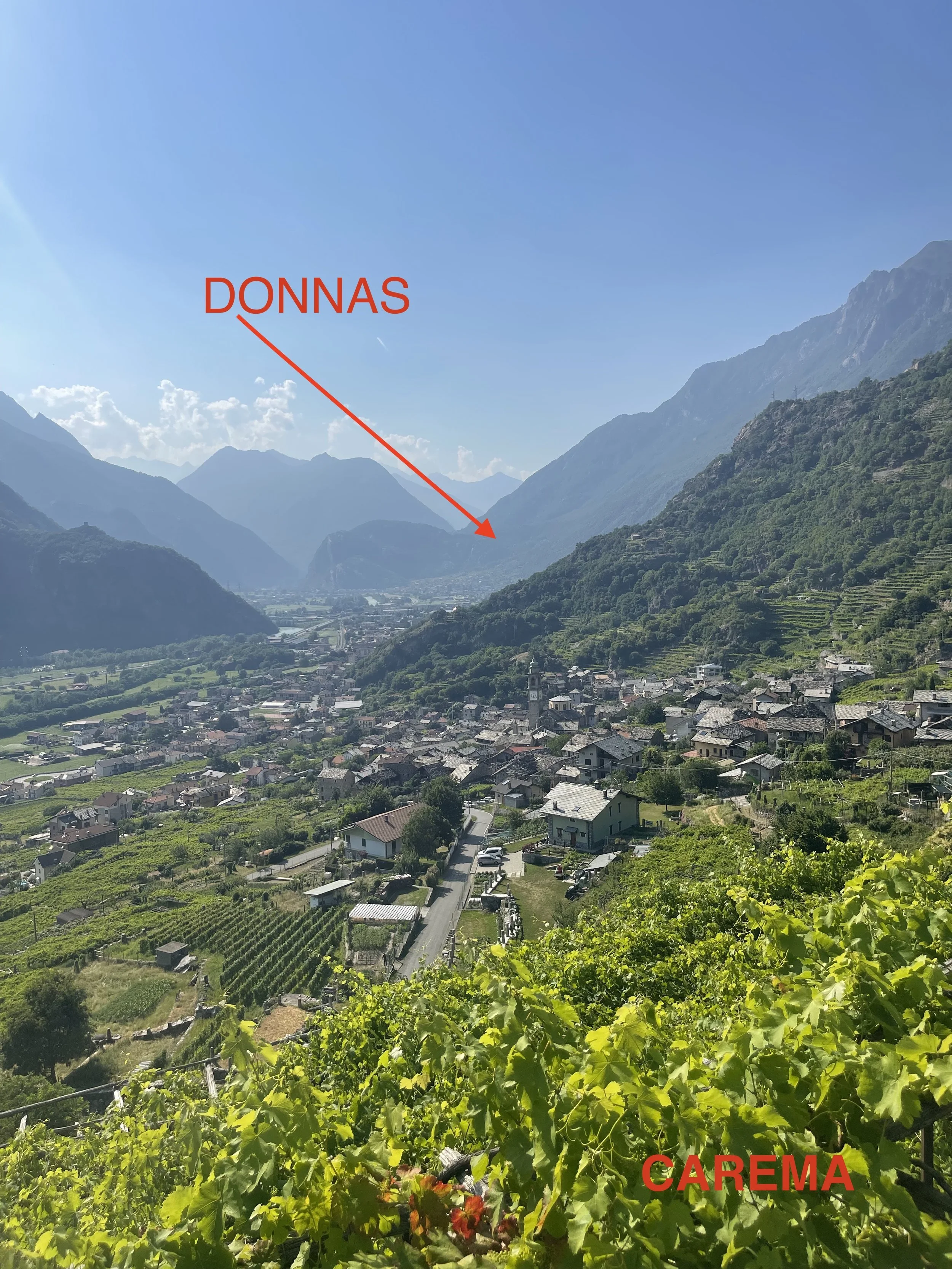Ghemme DOCG and the Noble Mountain Wines of Northern Piedmont
/by Alexa
Discovering Ghemme DOCG: A Hidden Gem of Northern Piedmont
The history of Ghemme DOCG wine is rooted in antiquity. The earliest signs of viticulture in the area date back to the 5th–4th millennium BC. Although wine production was already practiced by Celtic tribes, it truly flourished with the arrival of the Romans. During Roman times, the city of Agamium—modern-day Ghemme—was so closely tied to agriculture and winemaking that its symbol featured a bunch of grapes and a sheaf of wheat.
Officially recognized as a DOCG (Denominazione di Origine Controllata e Garantita) in 1997, Ghemme today remains lesser-known than neighboring Gattinara, from which it is separated by the Sesia River. Yet the wines produced from the hills of Ghemme and Romagnano Sesia often reach peaks of complexity and elegance, making it a standout among Nebbiolo wines from northern Piedmont.
Ghemme’s soils tell a geological story that connects it with two other historic DOCs: Sizzano and Fara. These three Piedmont wine denominations, located on the western side of the Sesia River, share mineral-rich, glacially-formed soils originating from the mighty Monte Rosa. Beneath a thin clay layer lies a bed of small, fragile pebbles—granite, porphyry, serpentine, and more—shattered by the forces of erosion. These nutrient-poor, well-draining soils challenge the Spanna grape (local name for Nebbiolo), forcing deep root penetration in search of water and minerals. The result is a structured, age-worthy wine with vibrant acidity and powerful tannins.
To be labeled Ghemme DOCG, the wine must contain at least 85% Nebbiolo (Spanna), with up to 15% Vespolina and/or Uva Rara permitted in the blend. These grapes, combined with the terroir’s unique minerality, result in wines that are elegant, earthy, and perfect for long-term cellaring.
Other Alpine Denominations in Northern Italy You Should Know
Erbaluce di Caluso DOCG: Piedmont’s Golden White
The Erbaluce grape has enchanted Piedmont for centuries. The first written reference dates back to 1606, in a treatise by Giovanni Battista Croce, jeweler to Duke Carlo Emanuele I. He praised this white grape grown around Turin, describing its brilliance and freshness. The name Erbaluce is thought to derive from Alba Lux (the light of dawn), alluding to the grape’s glowing golden hue.
According to local legend, Albaluce—a beautiful nymph born from the union of the Dawn and the Sun—gave birth to the grape through her tears, which formed sweet golden vines after a tragic flood devastated her people.
Erbaluce di Caluso DOCG was originally granted DOC status in 1967 and elevated to DOCG in 2010. It is produced in four distinct styles: dry still white, sparkling (Metodo Classico), passito, and passito riserva.
The vineyards are located in the morainic amphitheater of Ivrea, carved by glacial movements during the Pleistocene. The resulting soils are sandy, acidic, and rich in pebbles, creating the perfect setting for this expressive white wine. Erbaluce vines, typically trained using the pergola canavesana, grow on south-facing slopes between 200 and 500 meters above sea level.
Erbaluce di Caluso wines are crisp, floral, and mineral-driven in their youth. With age, they develop notes of dried fruit, almonds, and honey. The Passito Erbaluce, often made from grapes affected by Botrytis cinerea (noble rot), is vinified using traditional drying lofts (sulè) and stands among Italy’s most captivating dessert wines.
Carema DOC: Heroic Viticulture on the Edge of Piedmont
Nestled at the northernmost edge of Piedmont in the province of Turin, Carema DOC is a striking example of heroic mountain viticulture. Sharing borders and geology with the Aosta Valley, the area boasts soaring terraces built into rugged mountainsides at elevations between 360 and 700 meters (1180–2295 feet).
These terraces are supported by truncated-cone stone pillars, known locally as pilùn, which retain solar heat and release it during cooler nights, aiding slow and even ripening of the grapes. The vineyards are planted in sandy, acidic soils rich in glacial debris, fluvioglacial sediments, and weathered stone.
Established as a DOC in 1967, Carema wine must be made from 100% Nebbiolo grapes. The vines are trained on wooden pergolas (topie), a method unique to this denomination and its neighbor in the Aosta Valley: Donnas DOC.
Carema wines are pure expressions of mountain Nebbiolo—elegant and ethereal with aromas of violets, wild berries, and Alpine herbs. Their vibrant acidity, delicate tannins, and mineral backbone make them exceptional candidates for long aging.
Donnas DOC: Valle d’Aosta’s Noble Red
Donnas DOC was the first wine in the Valle d’Aosta region to receive DOC recognition, in 1971. Much like Carema, Donnas is characterized by steep, terraced vineyards clinging to granite-rich slopes carved by glacial activity. The terraces are supported by thick stone walls and dotted with barmet—traditional wine cellars tucked under boulders.
The soils of Donnas are morainic and well-drained, and the microclimate is relatively warm for a mountain region, with generous rainfall. Vines are grown on pergolas supported by stone columns, just like in Carema.
Donnas DOC wine must include at least 85% Nebbiolo, with the rest typically made up of local black varieties. The wine is intensely aromatic, with notes of dried violet, mountain herbs, and ripe or jammy red fruits. On the palate, Donnas shows structure, firm tannins, and a distinctive mineral streak. This is another great example of how Nebbiolo can thrive in extreme alpine terroirs.
Final Thoughts
If you’re looking to explore Italian wine regions beyond Barolo and Barbaresco, the high-altitude appellations of northern Piedmont and the Aosta Valley offer exceptional diversity and authenticity. Whether you’re drawn to the structured elegance of Ghemme, the golden glow of Erbaluce di Caluso, or the heroic wines of Carema and Donnas, these bottles tell stories of history, geology, and passion.
Planning a northern Italy wine tour? Don’t overlook these lesser-known but unforgettable destinations. From volcanic and glacial soils to centuries-old traditions, these wines offer a taste of Italy’s mountain soul.
Check out our Nebbiolo Madenss tour for Nebbiolo lovers here!




